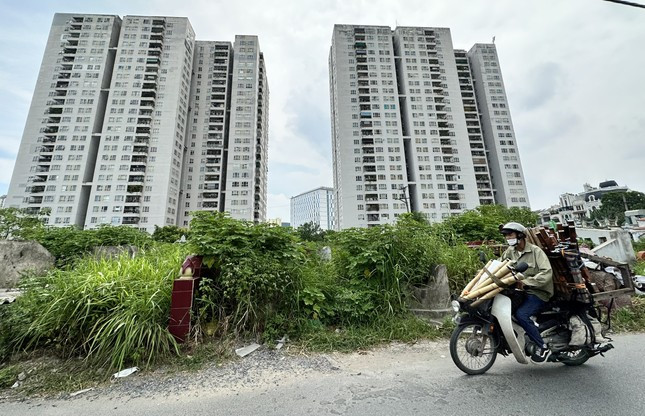Interest rates for home loans have decreased by 1-3% per year compared to the beginning of this year, but in the context of a sluggish real estate market, demand for home loans remains low.
According to a survey at many banks, the current interest rate for home loans ranges from 8-10%/year. Specifically, at the group of state-owned joint-stock commercial banks, Agribank offers home loans with an interest rate of 8.5%/year for the first year. Vietcombank has a real estate loan package with an interest rate of 8.5%/year for the first 12 months, 8.8%/year for the first 18 months, and 9.7%/year for the first 36 months.

Home loan interest rates have decreased but people are not interested
At PVcomBank, the interest rate for home loans is 9%/year for the first 6 months, or 10%/year for the first 12 months, the maximum loan term is 25 years and the bank offers many repayment options, and also allows principal grace period.
The interest rate for real estate loans at Techcombank in the first 6 months is 8.5%/year, the interest rate for the first year is 9%/year.
ACB also launched a real estate loan package with a sharply reduced interest rate and many attractive policies. Specifically, the first year's interest rate fluctuates at 8%/year; the floating interest rate from the second year is calculated by the base interest rate plus a margin of 3%.
Foreign-invested banks have also joined in reducing home loan interest rates. For example, Shinhan Vietnam offers home loans at interest rates of 8.3% per year for the first 6 months and 9.7% per year for the following years; or 8.5% per year for the first year, 9.3% per year for the first 2 years, and 9.5% per year for the first 3 years.
At Wooribank, the first year loan interest rate drops to 8%/year, the floating interest rate next year is only about 8.8 - 9%/year.
Notably, since the beginning of September, banks have also lent to people to repay other banks' debts ahead of schedule according to Circular 06. Currently, many banks have launched "debt restructuring" loan interest rates of only 6 - 6.9%/year for short-term loans and about 8%/year for medium and long-term loans.
This new regulation applies to loans for living needs such as buying a house, buying a car or buying household appliances...
Mr. Hoang Hai - Director of the Department of Housing and Real Estate Market Management, Ministry of Construction - said that as of August 31, outstanding credit for real estate business activities reached VND986,477 billion, an increase of more than VND26,000 billion compared to July 30.
Of which, outstanding credit for urban construction investment projects and housing development projects is VND266,248 billion; outstanding credit for office projects is VND40,622 billion; outstanding credit for industrial and export processing zone construction projects is VND56,571 billion; outstanding credit for tourism, ecological and resort projects is VND53,860 billion....
However, Mr. Hai said that the main source of capital for investors is not optimistic for borrowers to buy real estate.
According to a leader of a state-owned banking group, the reason why individual demand for consumer real estate credit is currently low is because the economy is still difficult, affecting people's income. Therefore, although there is a demand for housing, banks can hardly stimulate demand for home purchase credit at the current stage.
On the other hand, the real estate market is still sluggish, so customers are not interested in borrowing money to buy houses, but expect house prices and interest rates to decrease further.
Compared to the beginning of the year, the current lending interest rate level is considered "affordable" and by the end of the year, interest rates are expected to return to the low level as when the COVID-19 pandemic broke out.
Regarding interest rates, many experts recommend that borrowers pay attention to the period of preferential interest rates and the interest rate adjustment margin. In addition, they should not borrow more than 50% of the house value and the monthly payment (including principal and interest) should not exceed 30% of income.
The first 2-3 years are the most difficult and challenging, so each individual must have a stable and sustainable source of income to be able to absorb the loan without affecting their life too much.
According to VTC News